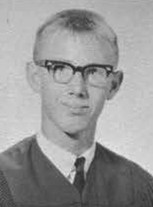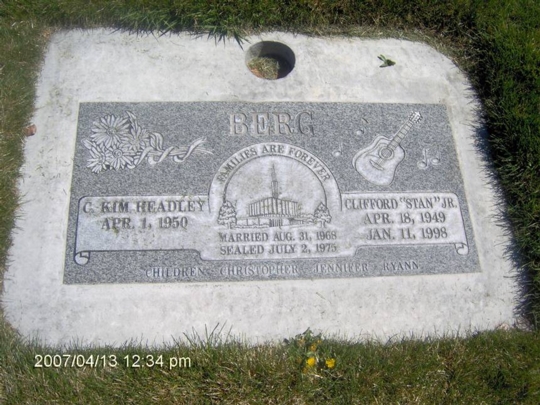4 die in crash of U. medical copter
By Amy Donaldson and Lois M. Collins, Staff Writers
Leave a commentFour people died Sunday when a medical helicopter crashed just seconds after picking up a skier who'd been rescued from an avalanche several hours earlier.
The University of Utah Hospital AirMed helicopter slammed into the side of the canyon just a few seconds after taking off from a parking lot at Snowbird Ski Resort.Killed in the crash were: pilot Stan Berg, 48, Roy; paramedic Tim Hynes, 45, Midvale; nurse Shayne Carnahan, 32, Clinton; and the patient, David Anderson, 43, address unknown.
Salt Lake County Sheriff's Search and Rescue Capt. Jeff Carr said it was unknown what caused the Bell 222 twin-engine helicopter to crash but said several members of the search and rescue team heard the crash.
"Some said they witnessed the bird, a few seconds prior (to the sound of the crash), having some problems," he said. "I don't want to speculate on what caused those. We just don't know."
Carr said weather conditions were windy and bad when the helicopter took off. When Berg didn't respond to radio calls, rescue workers immediately began preparing to search for the helicopter, which Civil Air Patrol crews were not able to locate by flying overhead.
"It was dark and snowing," Carr said. "Probably the worst conditions you could imagine for trying to find something."
Search and rescue volunteers waited while officials "shot the area" in an attempt to minimize the avalanche danger, Carr said. They'd only been able to use snowmobiles part of the way when rescuing Anderson earlier because of the avalanche risk.
At 2:10 a.m., the crews found the helicopter.
"Someone actually saw the smoke and flames on the hillside - that's how we actually located the wreckage," Carr said.
Working in the dark, snowy and extremely delicate conditions, crews slowly made their way to the crash site, which he described as "fairly steep and rugged."
Crews reached the wreckage about 4:30 a.m.
"It was fairly obvious there were no survivors," Carr said. "So we backed everybody out until daylight."
At 9:30 a.m. Carr said the wreckage was still burning and rescue workers were trying to rest before they tried to recover the bodies. Most of those who work on the search and rescue team are volunteers. They'd been on the mountain for hours rescuing Anderson, who was caught in an avalanche about 5 p.m.
Anderson was reportedly skiing with his wife and friends when he was buried by the avalanche, according to Bob Bonar, general manager at Snowbird.
Members of the Wasatch Backcountry Rescue Group were called out to join in the rescue attempt about 5:15 p.m. Sunday. It was already dark and difficult to see at that point and "it took a while just to get up there and find them."
Bonar said that Anderson was wearing a beacon and was not skiing out of bounds at the time of the snowslide, which reportedly "looked like it had a 3- or 4-foot crown at the top of the slide."
Carr said another AirMed helicopter came to the ski resort at that time, but because it was going to take crews hours to get Anderson out, the pilot decided to leave. It was a different rescue crew that came later, Carr said.
Anderson broke both legs and suffered internal injuries when he was knocked down by the slide.
Another skier in the area called for help on a cellular phone and guided rescuers to the scene of the accident, which was located about 3 miles from the canyon road. Other skiers stayed with the injured man until rescuers arrived.
Carr said rescue crews used snowmobiles for about a mile and then they had to switch to skis and snowshoes.
"He was in very serious condition," Carr said of Anderson. "They were concerned he was going to be a fatality. He was far from OK."
They reached the site of the avalanche about 7:45 p.m. and brought the victim down to a command post. Anderson was conscious when he was loaded into the helicopter.
Carr said the weather had been stormy on and off all day, but it was clear when Berg landed the helicopter shortly before 11 p.m.
A strong storm front moved off the Utah-Idaho border Sunday night, hitting in Little Cottonwood Canyon about 10 p.m.
The storm was laced with snow pellets, thunder, lighting and strong winds, according to William Alder of the National Weather Service.
The AirMed control room was in contact with the helicopter just before it lifted off from Snowbird, said John Dwan, spokesman for the University Hospital.
As soon as radio contact was lost, the emergency room at University Hospital was closed down and emergencies diverted to other hospitals. It reopened at 9 a.m. Monday. The impact of the closure on area hospitals was minimal.
"It was just impossible for the doctors and nurses to take care of patients with this pending, not knowing what happened," Dwan said.
"These people really are a family. They're a team, 24 hours a day, seven days a week. Their job is saving lives. There's a real bonding that takes place between people like that. Suddenly to lose three of their own in the crash, plus the patient - and nothing is more important to these people than patients - it's been absolutely devastating."
AirMed, which has its own team of nurses, pilots and paramedics, operates within the emergency room at the hospital. Following discovery of the crash, AirMed suspended all operations for at least 24 hours "to get organized, regroup and find out what happened," said Dwan.
All that hospital personnel knew in the early hours after the crash site was found was that "it was dark, a front came through, it was snowing and apparently the pilot became disoriented and flew into the mountain," Dwan said.
Decisions about whether to fly if weather conditions make a flight potentially unsafe are left to the pilot.
LDS Hospital's Life Flight crew is reeling with news of the accident, according to Dave Midget, a hospital spokesman. The two air-rescue teams - the U.'s AirMed and LDS Hospital Life Flight - work closely with each other. Members of the two teams know each other well.
"This has hit our program very hard," said Midget. "These weren't just fellow health-care professionals but our friends and colleagues, too. We'll be doing everything we can as the day progresses to support our colleagues at the U."
Dwan confirmed that Anderson's wife was waiting at University Hospital for her husband to be brought in when she was informed of the crash.
Comment on this storyThe most recent Utah air-rescue death was April 11, 1983. University Hospital AirMed pilot Louis A. Mertz, 29, was killed when his helicopter crashed into the foothills above the university during heavy fog.
Sunday's helicopter accident marked the first anniversary of several huge avalanches that tumbled down the Cottonwood Canyons, damaging about 50 cars and stranding almost 4,000 skiers overnight in lodges at Alta and Snowbird.
National Transportation Safety Board investigators were to arrive in Salt Lake City on Monday to determine the cause of the crash, said a spokeswoman for the Federal Aviation Administration in Seattle.

.jpg)

Terry Rogerson
My first wife flew for Life Flight for 9 years as a nurse and had several close calls and one major crash in 1991. Now my son Alex flies with Air Med as a paramedic. I pray for him and his crew every morning and every night. The protocols for flying are much stricter now than when Stan died. Thanks for your brave service Stan.
Russell Clark
Stan was a highly decorated Vietnam Veteran. His awards included, The Bronze Star, Purple Heart, Air Medal, Legion of Merit, along with 11 other decorations. Thank you for your service Stan.